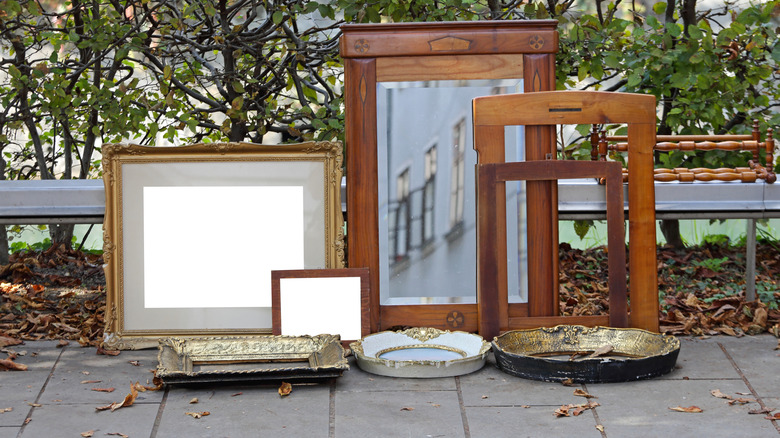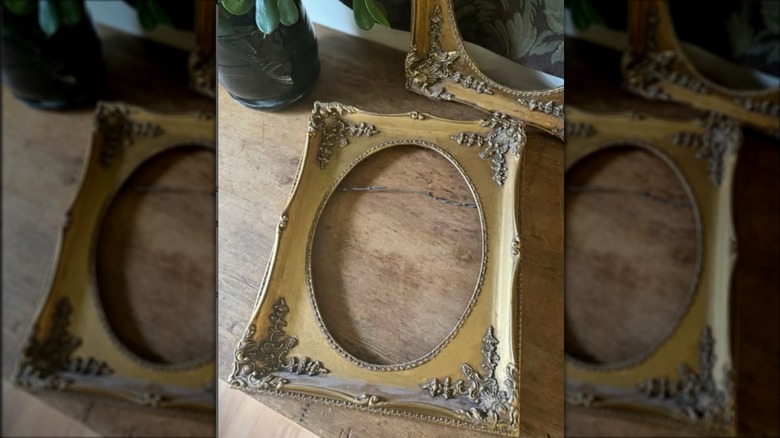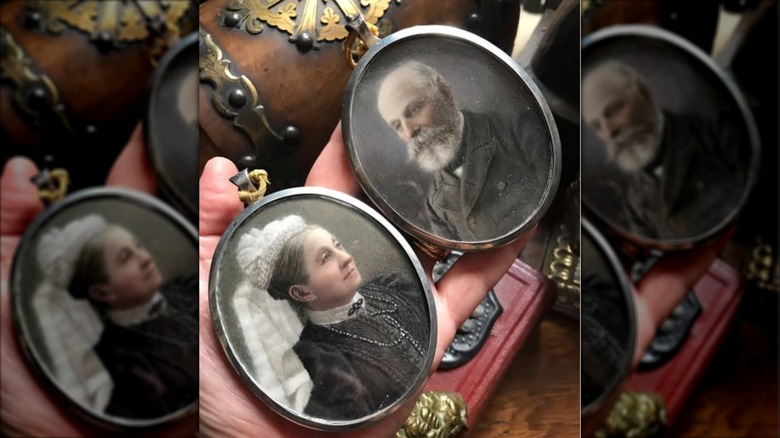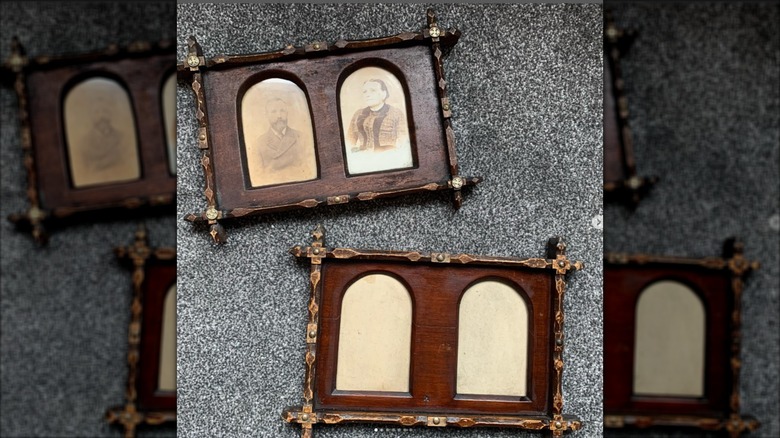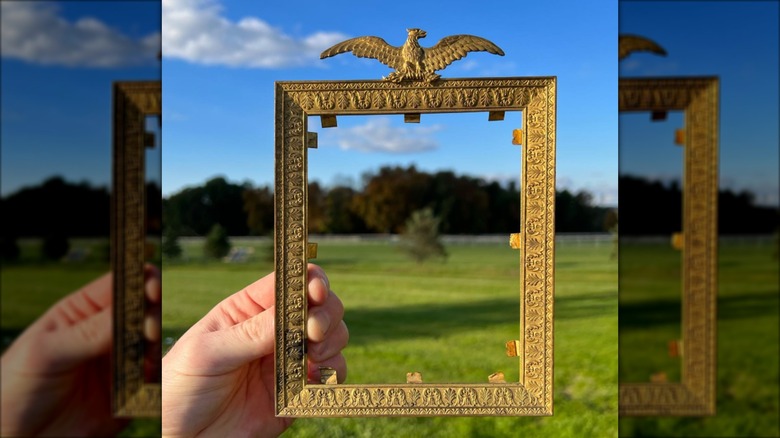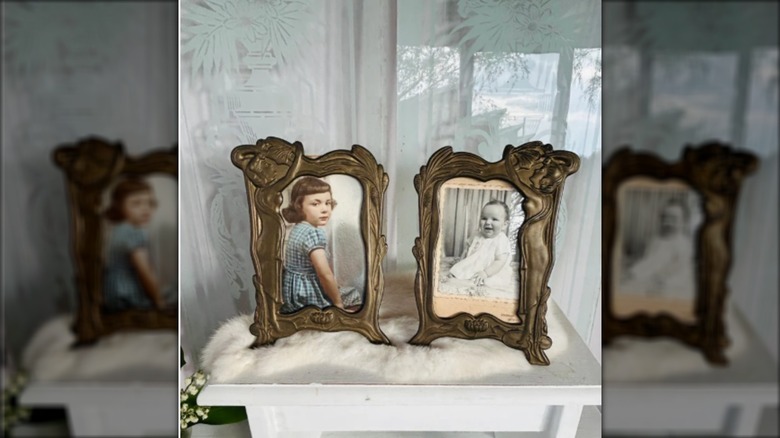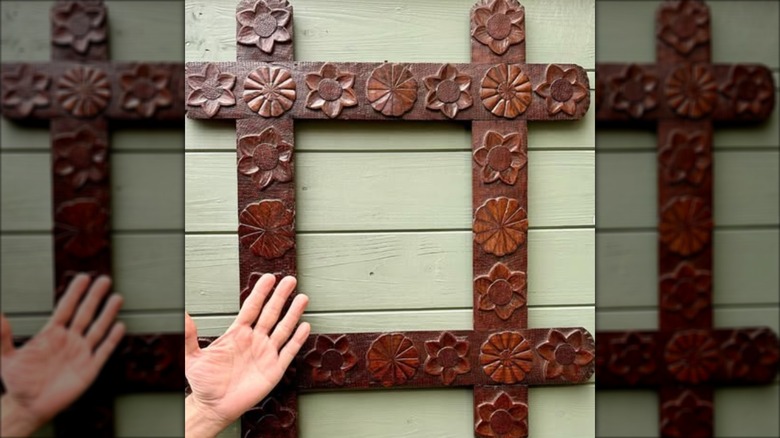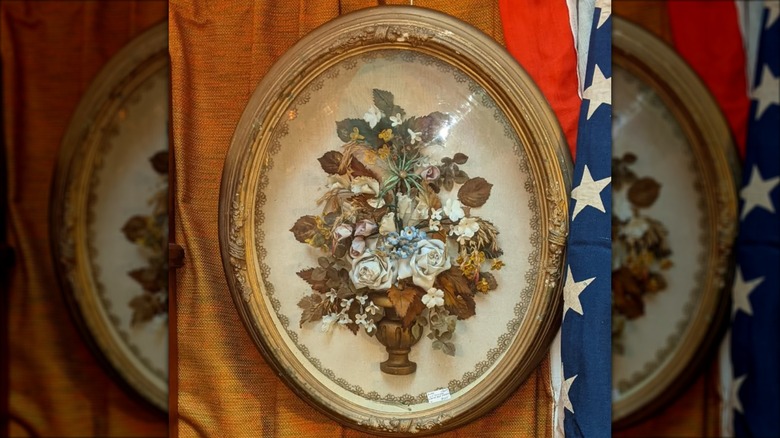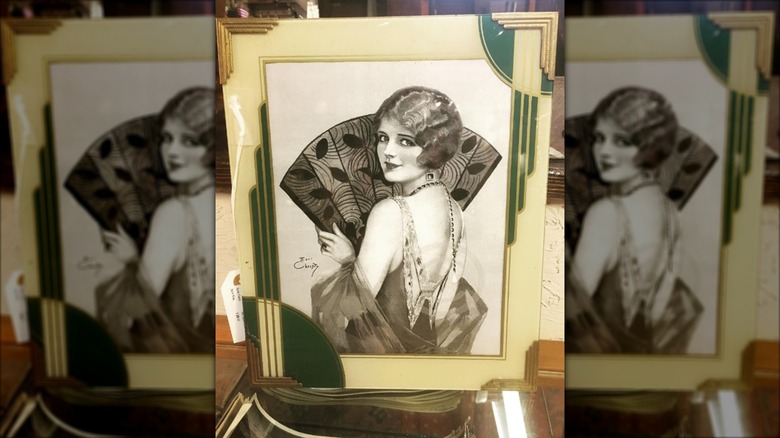8 Valuable Antique Picture Frames You Should Never Pass Over At Thrift Stores
We may receive a commission on purchases made from links.
If you're hunting for antique picture frames, head to your local thrift store and take a look at their art and wall decor aisles. Whether you're looking for beautiful additions to your perfect gallery wall, the ideal vintage frame for a prized family photo, or a stylish way to frame a painting or print, you can usually expect to pay only a few bucks for your finds. Still, some frames are infinitely more desirable and potentially valuable than others, usually drawing design details and construction from their era of origin. While they may be harder to track down and cost more if you seek them out online, antique frames in a number of styles, from Victorian portrait frames to sleek Art Deco frames from the 1930s, can be a beautiful way to add character and a sense of history to your home.
Thrifting luxe frames is cheaper than getting them from decor stores, frame shops, and art suppliers who sell similar reproductions. There are some key ways to identify older antique or vintage designs from more recent reproductions that often mimic the style of various design eras. Many frames bear manufacturer markings and professional framer names/logos on the back that can help determine a date of origin. While many antique frames are made from solid wood, you will also find antique frames in plaster, metal, and materials like plastic and lucite. Other markers, like the weight of a solid wood piece, the fastener hardware, and interior materials, can help determine age. The back of a frame can also exhibit signs of wear, wormholes, and discoloration that indicate how old it may be. You may also notice gilding lines for older gold frames where the gold leaf has been applied on older frames versus metal plate or painted gold frames found more commonly today.
Ornate Baroque-style frames
The popularity of ornately carved and gilded frames goes back centuries, when they were primarily used for framing painted artwork rather than photographs. These carefully carved older frames were typically made of solid wood rather than the composite or plaster that became popular in the Victorian era. You are less likely to encounter the most valuable of these frames, which hail from the 18th century or before, with hefty, multi-thousand-dollar price tags. But 19th and early 20th century Baroque-style frames, and reproductions from subsequent decades, can often be found secondhand or encountered as family heirlooms.
Victorian portrait frames
As early photography yielded new artifacts to be collected and displayed, Victorians looked for frames in smaller sizes, including tiny portrait designs meant to be carried with them in pockets and bags. These frames were typically wood, though other materials included sterling silver, bisque plaster, and enamel. Many had wood bases with composition ornaments attached for the ornate appearance, which were then gold leafed or painted.
Arts and crafts style frames
While exhibiting the same hand craftsmanship of pre-19th century frames, frames made during the Arts and Crafts era were often seen as a reaction to rampant industrialization and manufacturing, placing an emphasis on hand-hewn beauty combined with functionality. The frames themselves, however, were often more subtle in their ornamentation. Many have limited decorative details around the edges of a standard wood frame.
Neoclassical frames
Greek- and Roman-inspired designs and motifs cycle back around in popularity again and again across the centuries. But the 19th century brought a renewed interest in these periods after the discovery of sites like Pompeii and Herculaneum, which was reflected in Neoclassical accents on home decor pieces. Neoclassical frames from this century typically are wood or composite in natural or gilded finishes, often with lined or fluted sides and limited geometric ornamentation at the corners. Ornamentation could include medallions and common classical motifs like acanthus leaves, vines, bunting, and eagles.
Art Nouveau frames
The Art Nouveau era was all about beauty and opulence, sporting lots of botanical details, swooping lines, and feminine curved shapes. Like the Baroque-era frames, these designs had a high amount of ornamentation, though they were made of wood, plaster, or metal, which often accommodated the fine filigree work and ornamentation. Common motifs were women, fairies, botanicals, and insects like dragonflies or butterflies.
Folk art frames
Folk art frames from the 19th and early 20th centuries were typically created to accompany folk art pieces like paintings and drawings. Like Arts and Crafts frames, they emphasized hand-hewn craftsmanship, albeit with a focus on simpler materials and construction. Sometimes this meant slender sticks fashioned into frames or frames dotted with natural materials like seeds or shells. They usually bore a wood or painted finish and were sometimes, like "tramp art" frames, constructed from recycled wood from cigar boxes and shipping crates.
Victorian shadowbox frames
Shadowbox frames were a popular way to display military and maritime ephemera during the Victorian era, but they could also house other kinds of ephemera, dried flowers, natural specimens, and memorabilia. While many were simple wooden frame boxes with glass, they could be quite ornate, some with gilded perimeters and interior skinny shelves. They came in various shapes, including rounder frames meant to hold embroidery pieces with three-dimensional beading.
Art Deco frames
Art Deco style countered Art Nouveau's curves and ornamentation with a more masculine and streamlined feel. These Art Deco gems were inspired by the growing automotive age and abundance of new manufactured materials like plastic, glass, and chrome. The lines were more symmetrical than Art Nouveau as well, with geometric details and common Art Deco motifs like arches, fans, and starbursts.
